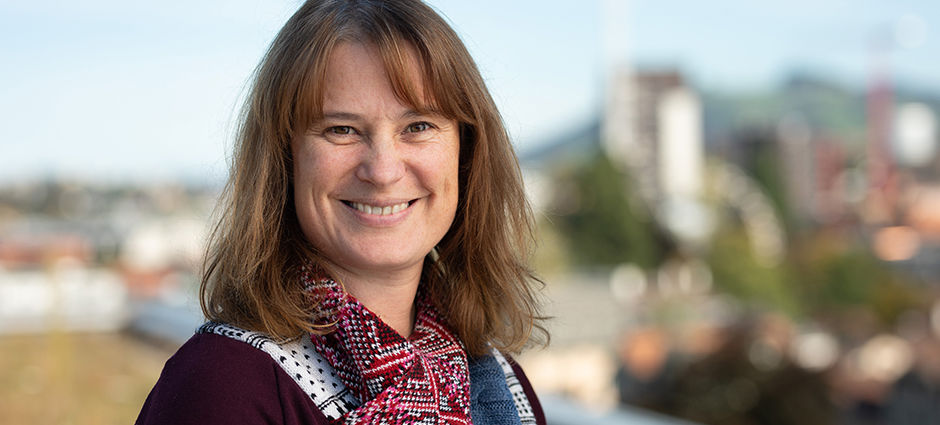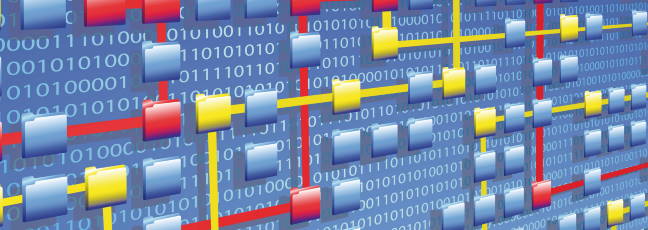Academic stories: Barbara Weber
academic storiesNarrated by Barbara Weber

My name is Barbara Weber. I work at the University of St. Gallen (HSG), one of the leading business schools in the world. In St. Gallen, I hold the Chair of the Software Systems Programming and Development Group. Moreover, I am the Dean of the newly founded School of Computer Science at HSG since the 1st of August 2020. Together with my colleagues and supported by the IT Education Initiative of the Canton St. Gallen we are in the process of establishing Computer Science programs for East Switzerland and beyond. Our programs will combine Computer Science with Entrepreneurship and Business Innovation to build on the strengths of HSG. I am excited about the unique opportunity to build a faculty from a green field and be part of a young, highly dynamic team. Right now, work feels more like being in a start-up than a traditional university as we frequently need to step into unknown territory (for our university) and adjust the organization continuously – with every growth cycle. Here my passion to travel into remote, exotic places requiring rapid adaptations pays off nicely. Prior to that, I worked for 3 years at the Technical University of Denmark where I led the Section for Software and Process Engineering. Before moving to Denmark, I studied and started my research career at the University of Innsbruck, Austria.
I have been working on topics related to Business Process Management (BPM) since 2002 and met the BPM community in person for the first time in 2004 at the 2nd BPM conference in Potsdam. BPM 2004 is special for me not only because it was my first BPM conference, but also because it was the start of a long-term, fruitful collaboration with Manfred Reichert and his team, which still lasts today. My research interest at that time was in process flexibility and I was intrigued by the potential of process mining to exploit both change logs along with context information about the changes and their reasons to support change reuse. With Manfred Reichert, I worked on the integration of these ideas into the adaptive workflow technology he was working on in Ulm. Together we participated in the first edition of the International Workshop of Business Intelligence (BPI) in 2005, which I was co-organizing from 2007 to 2014. I realized that the flexibility needed to adapt to changes in the environment comes at the cost of increased complexity for the user. A discussion with Wil van der Aalst at a BPM conference on the potential of process mining to support end-users through recommendations based on history kicked off a collaboration with Wil’s group. During a visit to the Eindhoven University of Technology in 2007, I worked with Boudewijn van Dongen and Helen Schonenberg on the development of an approach for recommending next process steps.
While my interest in human and cognitive aspects continued, I became increasingly interested in processes in a broader sense. Together with my team in Innsbruck (Andrea Burattin, Cornelia Haisjackl, Jakob Pinggera, Stefan Zugal) and in close collaboration with several international researchers (Jan Claes, Dirk Fahland, Jan Mendling, Hajo Reijers, Pnina Soffer, Matthias Weidlich, Irene Vanderfeesten) we started a stream of research on the process of process modeling. Our assumption was that a better understanding of the modeling process would help to better support users and, as a consequence, lead to a higher model quality. To trace the process of process modeling, we started our research by collecting logs of user interactions and gradually added verbal utterance in form of think-aloud as well as eye-tracking. Our research not only resulted in the identification of behavioral patterns and modeling styles based on the collected interaction traces, but also contributed to a better understanding of how users make sense of process models, what challenges they face, and how modelers inspect process models.
In 2016, I was appointed Full Professor in Software Engineering and moved to Denmark. For a period of 3 years I exchanged my beloved mountains for a vibrant city by the sea. What remained was my keen interest in human and cognitive aspects as well as my interest in analyzing process-oriented data. Together with Andrea Burattin and my PhD students Amine Abbad Andaloussi and Constantina Ionaou, we started to explore process mining as a tool to visualize reading patterns collected from eye-tracking data and applied this to different software artifacts (process models as well as source code). One of the challenges in this context is log extraction since there are no readily available log files that can be analyzed, but logs need to be generated from the user’s eye movements. This entails that the eye-tracking data and the source code artifact are linked. However, this data is too fine-grained and event abstraction is needed to obtain higher-level actions, which can be visualized as process maps. We used the notion of “Areas of Interest” and aggregated consequent low-level actions in the same “Area of Interest” to a higher-level action.
In February 2019, I moved to Switzerland (closer to the mountains!) and became interested in the integration of Business Process Management and IoT. I find this area very interesting since disruptive technologies like the Internet of Things (IoT) penetrate every aspect of our life and every business domain also providing opportunities to design novel business processes and applications. IoT devices can serve as new data and event sources allowing for real‑time monitoring of business processes and just‑in‑time decision making. Apart from its practical relevance, the area provides several interesting research challenges as described in the BPM and IoT Manifesto that has been recently published in the
Together with my new team in Switzerland (Francesca Zerbato, Ronny Seiger and Martin Eigenmann) I also recently started to look into the process of process mining. Process mining has developed over the last years into a mature discipline. Process mining encompasses several exploratory analysis tasks, which are knowledge-intensive and require analysts to rely on their own experience to make sense of data. Like all the other processes I focused on in my previous work, the process of process mining is a highly flexible process and I found myself reminded of my early work on process flexibility and recommendations to balance flexibility and support as well as the importance of understanding the user to effectively provide support. So far, however, little attention has been paid to understand the behavior of process analysts during process mining, including the challenges that analysts face. In our research we focus on gaining a comprehensive understanding of how analysts do process mining in practice (the “process of process mining”, indeed) including frequent patterns of effective and non-effective behavior, analysis profiles, common analysis strategies, and typical challenges. Here we closely collaborate with Pnina Soffer and her team who has started to work on related aspects. Based on this we plan to develop methodological guidance and software-based operational support to assist (novice) analysts during the analysis and we hope that other members of the community will join us in these efforts.
For those who like to read a bit more about some of the works I referred to, here are some pointers:
- Recommending next process steps:
- The process of process modeling:
- The visualization of reading patterns using process mining:
- The integration of Business Process Management and IoT:
- This article has been updated on December 22 2020, 10:18.
- Narrated by Barbara Weber

